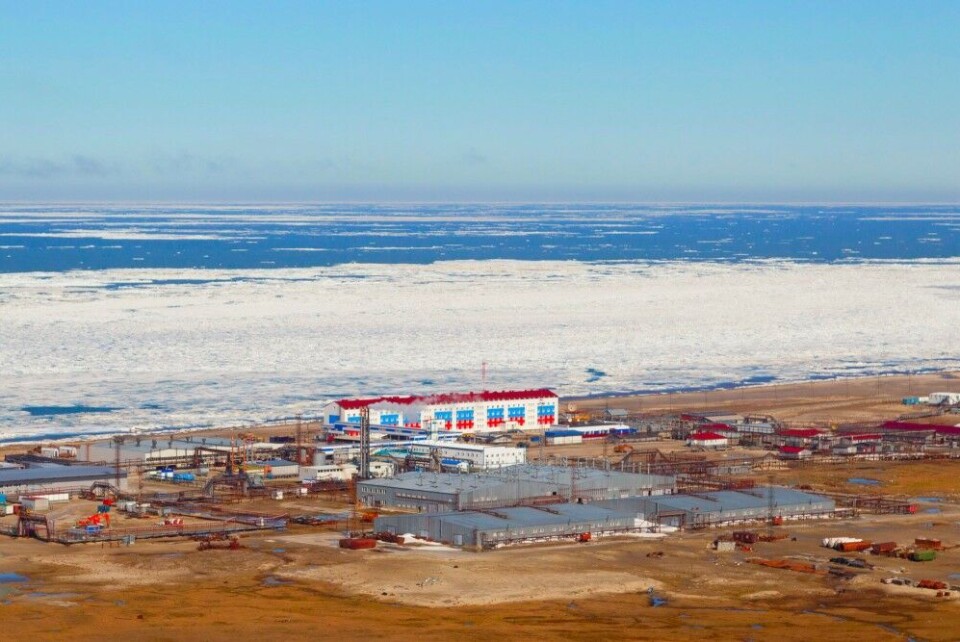
As ice retreats, oilmen get new acreage for drilling along Arctic coast
Russian oil and gas regulators are liberalizing procedures for oil extraction along the country’s remote northern coasts.
p.p1 {margin: 0.0px 0.0px 20.0px 0.0px; text-align: justify; line-height: 23.8px; font: 14.0px Arial; color: #000000; background-color: #ffffff}span.s1 {font-kerning: none}span.s2 {font-kerning: none; color: #95000e}
A bill authored by the Ministry of Natural Resources was in October this year hammered through parliament. It grants oil and gas companies expanded rights to explore resources both in internal and territorial waters and is aimed at lowering the financial burden of the oilmen engaging in the region.
«It allows us to increase the intensity of geological exploration in these waters,» ministry representative Yevgeny Tanin says.
Big resources
According to the ministry, there are huge hydrocarbon reserves hidden under the shallow seas in the area. Only the license area of Khastakh-more in the Laptev Sea might hold about 13 billion cubic meters of natural gas and 500,000 tons of condensate, the government body informs. Similarly big resources are located in licenses like the Prigydansky area in the Kara Sea, as well as in parts of the Barents Sea.
The new legislation is adopted as the level of Arctic ice reaches historical lows. According to ice data from the National Snow and Ice Data Center, the month of November 2019 had the second lowest Arctic sea ice extent for the month in the 41-year satellite record.
Climate change is increasingly making previously inaccessible areas in the Russian North available for industrial activity.
Shrinking ice
A new climate report from the Russian meteorological institute states that the polar parts of the country have become almost 2,3 degrees warmer over the past 30 years. And in parts of the region, the heat is gaining breath-taking force. In the Kara Sea, average air temperatures in the period 1998-2018 were as much as 4,77 degrees above normal.
Several oil companies appear eager to engage. Drilling along the coast might be far less complex and cheaper compared with deeper offshore areas.
Both Gazprom and Novatek are from before heavily engaged in shallow waters along the Yamal Peninsula, and Rosneft in 2017 reportedly found more than 80 million tons of oil in its Tsentralno-Olginskaya-1 field, a structure located in the Khatanga Bay. The well was drilled from land in the nearby Taymyr Peninsula.
New licenses
The state-owned oil company this week again confirmed its major interest in the remote region. Rosneft President Igor Sechin put more than 6 billion rubles on the table for the acquisition of the license areas of Mezeninsky, Severo-Dzhangodsky and Yangodsky in Taymyr.
The licenses together cover an area of 6,400 square kilometers and hold an estimated 177 million tons of oil and 448 billion cubic meters of natural gas, the company informs.
Rosneft’s interest in the Taymyr Peninsula might be connected with the current development plans for Russian Arctic infrastructure. The Northern Sea Route has become a top national priority and several major industrial projects are in the pipeline. Among them is a projected oil pipeline to a site near Dikson, the small town in Taymyr. The pipeline is heavily supported by both Rosneft and its partner Neftegazholding.
The melting sea ice and the building of new infrastructure and icebreakers could ultimately enable Rosneft and the other oil and gas developers to bring their hydrocarbons out of the region. But it still comes with a very high price.
















